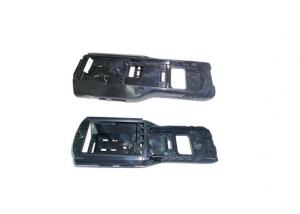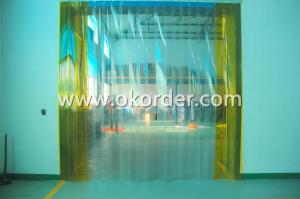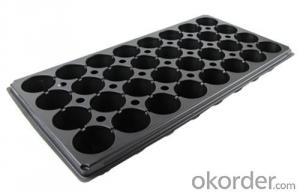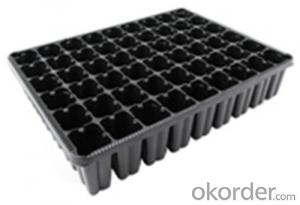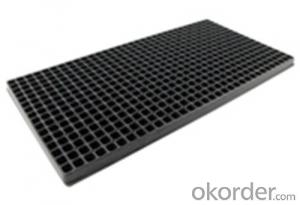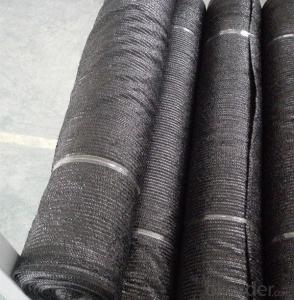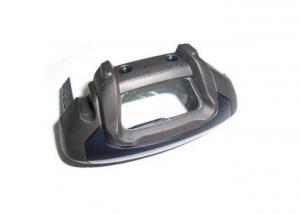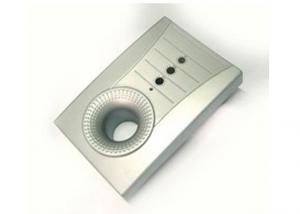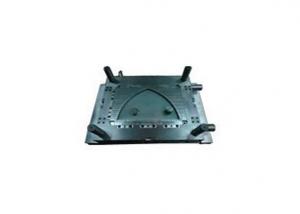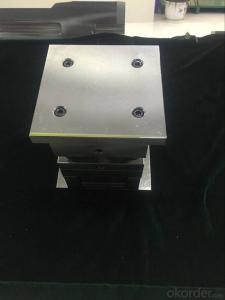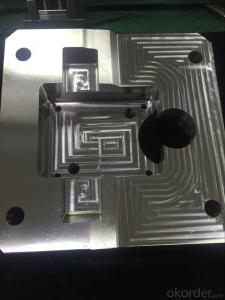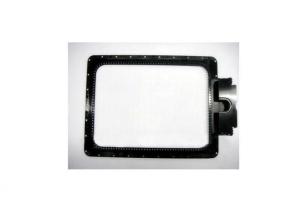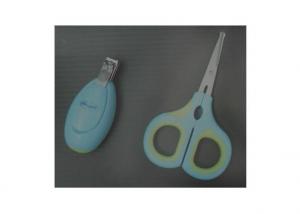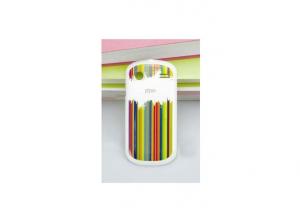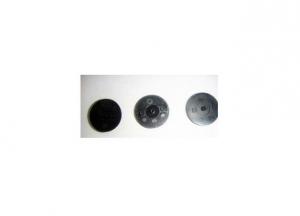Precision Injection Mould for PDA with Scanner Integrated Machine
- Loading Port:
- China Main Port
- Payment Terms:
- TT or LC
- Min Order Qty:
- 1 Set watt
- Supply Capability:
- 100 Pieces per Month watt/month
OKorder Service Pledge
OKorder Financial Service
You Might Also Like
Detailed Product Description
1.Standard LKM
2.Finish: Texture MT11015
3.Material : PC
4.Mould Life: 300,000 shots
Precision injection mould for PDA with the scanner integrated machine
Certificate: ISO 9001:2008
20 years experience
Name |
Plastic injection Mould products |
Plastic material |
ABS,PC,ABS+PC,PA66,HIPS,PE,PP,etc |
Cavity & Core |
NAK80,S136 HRC48~52° |
Mould base |
LKM , HASCO |
Nos of Cavity |
As customer rquest |
Mould Standard |
DME, HASCO |
Mould Runner |
Hot Runner,Cold Runner … |
Surface finish |
Texture, High glossy ,Painting,Chrome Plating |
Delivery time |
20-35 Days |
Mould Packing |
Wooden Box or as your requirement |
Our Advantages:
-- Competitive price.
-- Professional, excellent, but simple design.
-- High quality, reliability and long mould life.
-- Professional customised R&D program.
-- Diverse and mature craft.
-- Continuous service and supply.
-- Strict quality management.
-- High-quaity and integrated equipments:
-- High-speed processing center.
--Sodick wire cutting.
--Sodick cnc sinker EDM, EROWA Tooling System.
--40 sets plastic machinery with 80-1600MT.
--All our operations satify the standard of ISO9001:2008 certification.
--Exported products comply to requirements of Rohs certificate.
- Q: Can electronic plastic be made resistant to high voltage or electrical discharge?
- Yes, electronic plastic can be manufactured to be resistant to high voltage or electrical discharge by incorporating additives or using specialized polymers with high dielectric strength and insulation properties.
- Q: Engineering plastics used in electronic and electrical engineering PEEK, PEI, what is the specific part of the call?
- PEI is mainly used for electrical and electronic components wear - resistant flame retardant insulation in the field of electrical and electronic, including connectors, ordinaryandmicro relayshell, circuit board, coil, flexible circuit, mirror, high precisionopticalcomponentsof high strength and dimensional stability
- Q: Can electronic plastic be made resistant to moisture or water ingress?
- Yes, electronic plastic can be made resistant to moisture or water ingress. By using specialized coatings and sealants, electronic components can be protected from moisture damage, ensuring their longevity and optimal performance. Additionally, advancements in materials science have led to the development of water-resistant and waterproof electronic plastics, which are specifically designed to prevent water ingress and maintain the functionality of electronic devices even in wet environments.
- Q: How is electronic plastic used in RFID tags?
- Electronic plastic is used in RFID tags as a substrate or carrier for the electronic components. It provides a flexible and durable material that can withstand harsh environments. The plastic is typically printed with conductive inks to create the antenna and other circuitry required for the RFID tag to function. Additionally, the plastic can be molded or laminated to encapsulate the electronic components, protecting them from external factors such as moisture or physical damage.
- Q: How is electronic plastic recycled?
- Electronic plastic recycling involves several steps. First, the plastic from electronic devices is collected and sorted based on its type and composition. Then, the plastic is shredded into small pieces, which are further separated by type using various techniques, such as density-based sorting or electrostatic separation. Next, the separated plastic pieces are cleaned to remove any contaminants. After the cleaning process, the plastic is melted and formed into pellets or granules, which can be used to manufacture new electronic devices or other plastic products. This recycling process helps reduce waste and conserve resources, contributing to a more sustainable and circular economy.
- Q: How does electronic plastic impact the electromagnetic interference of electronic devices?
- Electronic plastic can significantly impact the electromagnetic interference (EMI) of electronic devices. It has the potential to absorb and dissipate electromagnetic waves, reducing their interference on nearby electronic components. Additionally, electronic plastic can act as a shield, preventing external electromagnetic fields from entering the device and causing interference. However, if not properly designed or shielded, electronic plastic can also generate its own electromagnetic emissions, leading to additional interference. Therefore, careful consideration and proper implementation of electronic plastic are crucial to mitigate EMI and ensure optimal performance of electronic devices.
- Q: How does electronic plastic affect the overall user experience of electronic devices?
- Electronic plastic can greatly impact the overall user experience of electronic devices. With its versatility, durability, and lightweight nature, electronic plastic allows for sleek and ergonomic designs, enhancing the aesthetics and comfort of the device. Moreover, it provides protection to delicate internal components, ensuring longevity and reliability. Additionally, electronic plastic enables the integration of functionalities such as touchscreens, buttons, and sensors, enhancing user interaction and convenience. Overall, electronic plastic plays a crucial role in improving the user experience by balancing functionality, aesthetics, and durability in electronic devices.
- Q: How does electronic plastic impact the overall lifespan of electronic devices?
- Electronic plastic can have a significant impact on the overall lifespan of electronic devices. It plays a crucial role in protecting the internal components from external factors such as moisture, dust, and physical damage. By providing insulation and structural support, electronic plastic helps to extend the lifespan of devices by preventing electrical shorts, component failures, and corrosion. Additionally, electronic plastic also facilitates heat dissipation, which is crucial for preventing overheating and ensuring optimal performance. Therefore, the quality and durability of electronic plastic directly influence the longevity and reliability of electronic devices.
- Q: How does electronic plastic impact the overall user interface of electronic devices?
- Electronic plastic has a significant impact on the overall user interface of electronic devices. It allows for the creation of sleek and slim designs, making devices more portable and visually appealing. The flexibility of electronic plastic enables the development of curved screens or touch-sensitive surfaces, enhancing the user experience by providing more interactive and intuitive interfaces. Additionally, electronic plastic is often used for buttons, switches, and casings, offering durability and resistance to damage. Overall, electronic plastic plays a crucial role in shaping the user interface of electronic devices, contributing to their functionality, aesthetics, and ease of use.
- Q: How does electronic plastic affect the overall cost of electronic device maintenance and repairs?
- Electronic plastic can have a significant impact on the overall cost of electronic device maintenance and repairs. Firstly, electronic plastic is a commonly used material for various components of electronic devices, such as casings, buttons, and connectors. If these plastic parts break or become damaged, they may need to be replaced, which can add to the repair cost. Additionally, electronic plastic can affect the accessibility of internal components, making repairs more complex and time-consuming. Moreover, the quality and durability of electronic plastic can vary, with cheaper or lower-quality plastics being more prone to damage, leading to more frequent repairs. Therefore, the choice of electronic plastic used in devices can directly impact the cost and frequency of maintenance and repairs.
1. Manufacturer Overview
| Location | Guangdong, China (Mainland) |
| Year Established | 2010 |
| Annual Output Value | |
| Main Markets | North America South America Eastern Europe Southeast Asia Africa Eastern Asia Western Europe Central America Northern Europe Southern Europe South Asia |
| Company Certifications |
2. Manufacturer Certificates
| a) Certification Name | |
| Range | |
| Reference | |
| Validity Period |
3. Manufacturer Capability
| a) Trade Capacity | |
| Nearest Port | Osaka Japan,Ravenna Italy,Montreal American |
| Export Percentage | 61% - 70% |
| No.of Employees in Trade Department | 6-10 People |
| Language Spoken: | English, Chinese |
| b) Factory Information | |
| Factory Size: | 5,000-10,000 square meters |
| No. of Production Lines | Above 10 |
| Contract Manufacturing | OEM Service Offered |
| Product Price Range | |
Send your message to us
Precision Injection Mould for PDA with Scanner Integrated Machine
- Loading Port:
- China Main Port
- Payment Terms:
- TT or LC
- Min Order Qty:
- 1 Set watt
- Supply Capability:
- 100 Pieces per Month watt/month
OKorder Service Pledge
OKorder Financial Service
Similar products
Hot products
Hot Searches
Related keywords
